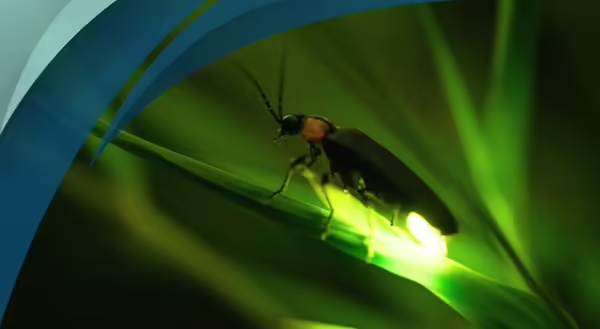
Are they “lightning bugs”? Or do you prefer “fireflies”? Either way, these living, glowing little lamps are an inimitable sign that summer is truly in full swing.
Lifecycle
There are more than 20 species of lightning bugs in Illinois, all within the family Lampyridae. Like all beetles, they have a “complete” lifecycle, starting as an egg, then going to larvae, pupa, and adult. Eggs are laid in moist areas, such as soil and leaf litter. Larvae will hatch within 2 to 3 weeks where they will begin feeding on other invertebrates such as worms, snails, and slugs. These pest-eating machines will overwinter in the soil before emerging the following spring to continue eating. They will then pupate before emerging as adults. The adults will lay eggs, starting the cycle all over again.
Do you see the light?
Not all adult lightning bugs produce light. Some fly during the day and so the light wouldn’t be useful. However, all larvae and even many of the eggs will glow, also known as bioluminescence. The adults that do glow use that light to attract mates. One way to identify the species is to watch the pattern that is flashed. It might be a series of short flashes or a flash using movement to look like the letter “J” but the females are nearby looking for just the right pattern. She will then flash back from the ground or perched on a plant when she sees it.
Helping fireflies at home
Research into lightning bugs is fairly new, but there are indications that their populations are declining. This decline is believed to be due to a combination of many issues, including habitat loss and increased light pollution. Light pollution is the human alteration of light levels at night from streetlights, homes, parking lots, and others that exist in populated areas. (It’s why we can see so many more stars out in remote areas, as opposed to city and suburban spots.)
The second issue is habitat loss. Because most lightning bug larvae live in leaf litter, decaying wood, and especially wet, marshy areas, pristine maintenance of gardens and yards can remove habitat. In addition, use of pesticides like mosquito sprays are especially harmful to lightning bugs.
So what can you do to help?
- Dim or turn off unnecessary outdoor lights at night. For required lighting, use dark sky friendly outdoor fixtures. These fixtures are typically shaded to direct light downward, where it’s needed, instead of laterally and up. Even closing the shades inside can help reduce the amount of light escaping to the outside.
- Leave logs and leaf litter. Not only does it make great mulch, it provides a safe haven for lightning bug larvae. Also, avoid disturbing the ground in these areas, as the larvae spend most of their time at the soil surface.
- Avoid using insecticides in your lawn and gardens. Things like mosquito foggers can also harm lightning bug populations. Use non-chemical methods, like fans and removing standing water to prevent mosquito issues. Pesticides that kill slugs and snails also can remove their food sources.
For more information on gardening, check out the University of Illinois Extension website at extension.illinois.edu. Also, check out the University of Illinois Extension Horticulture YouTube Channel for videos on other horticulture topics.
About the author: Jamie Viebach is the University of Illinois Extension Horticulture Educator serving DuPage, Kane, and Kendall counties. Viebach’s primary areas of expertise are native plants, landscaping, pollinators, and rain gardens.